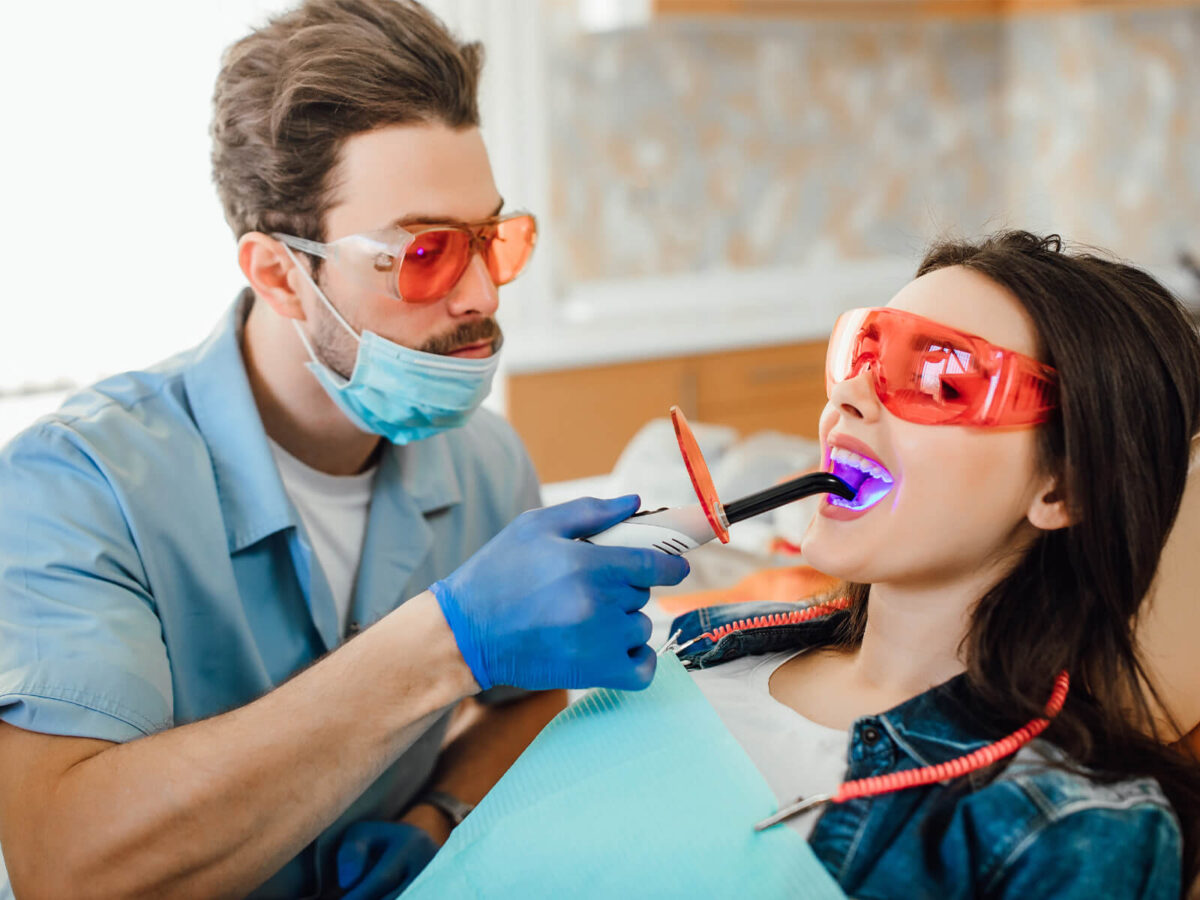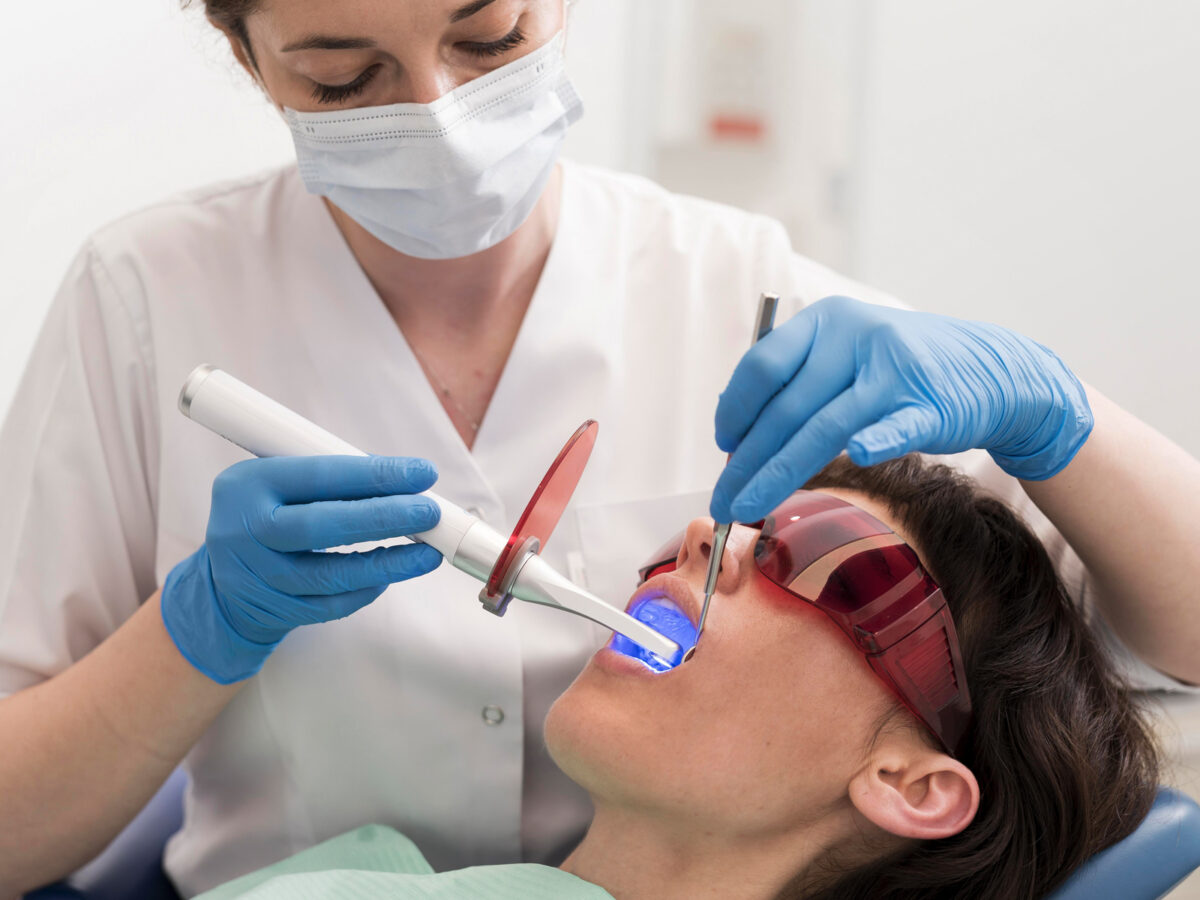A sparkling, white smile is often associated with vitality and good oral health, making teeth whitening a popular cosmetic dental procedure. However, with the increased interest in achieving a brighter smile, some myths have evolved that can influence people’s judgments and expectations.
In this post, we aim to clarify five common teeth whitening myths, offering accurate information to assist individuals in making informed decisions about this cosmetic dentistry procedure.
5 Common Misconceptions or Teeth Whitening Myths
All Teeth Whitening Methods Are the Same:
- Misconception: Many believe all tooth whitening treatments are identical and offer the same results.
- Reality: There are various teeth whitening treatments, each with unique characteristics and effects. Professional, in-office teeth whitening treatments conducted by dentists often use higher concentrations of whitening agents, leading to more immediate and noticeable effects. While beneficial to some degree, over-the-counter products may have lower concentrations and take longer to produce visible improvements. Choosing a teeth whitening procedure should align with individual goals, preferences, and the guidance of dental professionals.
Teeth Whitening Damages Tooth Enamel:
- Misconception: A widespread concern is that teeth whitening can harm the protective enamel layer of the teeth.
- Reality: When conducted under the supervision of a dental professional, teeth whitening is a safe and non-destructive procedure. Whitening products typically use hydrogen peroxide or carbamide peroxide as the active ingredient. These compounds penetrate the enamel to break down stains but do not harm the enamel itself. While some individuals may experience temporary tooth sensitivity during or after whitening, this is not indicative of enamel damage and usually resolves.
Whitening Results Last Forever:
- Misconception: There’s a prevalent assumption that teeth whitening results are permanent.
- Reality: While teeth whitening can provide long-lasting results, it is not a permanent solution. The durability of whitening results varies among individuals and is influenced by diet, oral hygiene practices, and lifestyle choices. Consuming stain-causing substances, including coffee, tea, red wine, and tobacco, can diminish whitening effects. Periodic touch-ups or maintenance treatments may be necessary to maintain the desired level of whiteness over time.
Over-the-Counter Products Are as Effective as Professional Treatments:
- Misconception: Some believe that over-the-counter teeth whitening products yield results equivalent to professional, in-office treatments.
- Reality: While over-the-counter whitening products can contribute to teeth whitening, they may have limitations compared to professional treatments. Professional methods performed under the guidance of a dentist sometimes use higher concentrations of whitening agents, leading to more substantial and quicker results. Over-the-counter products like whitening toothpaste or strips may offer more gradual improvements. The effectiveness of these products can vary, and individuals seeking more immediate or noticeable changes may benefit from professional treatments.
Whitening Works for All Types of Stains:
- Misconception: There’s a common misconception that teeth whitening is universally effective for all dental stains.
- Reality: Teeth whitening is most effective for extrinsic stains and surface-level discolorations caused by external factors like food, beverages, or tobacco. These stains respond well to whitening agents that penetrate the enamel to break down the discolorations. Intrinsic stains, on the other hand, originate from within the tooth structure and may result from factors such as certain medications or dental trauma. Whitening may not be as effective for intrinsic stains, and alternative cosmetic dental procedures like veneers or bonding may be more suitable for addressing these discolorations.
Conclusion
Achieving a brighter, whiter smile through teeth whitening is a popular choice for many individuals seeking to enhance their appearance and boost their confidence. However, it’s crucial to approach teeth whitening with accurate information, separating facts from misconceptions.
Consulting with a dental professional is essential for understanding the options, setting realistic expectations, and choosing the most suitable method for achieving the desired results. By debunking these common teeth-whitening myths, individuals can make informed decisions about teeth whitening and take steps toward achieving a radiant, confident smile.



